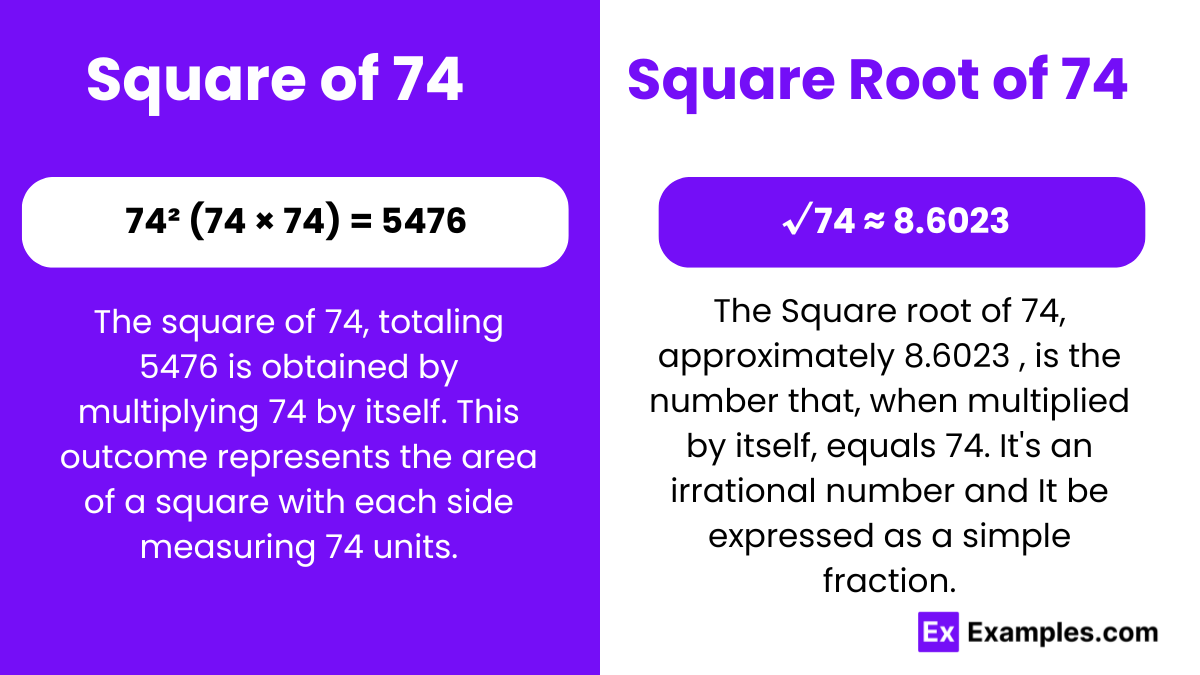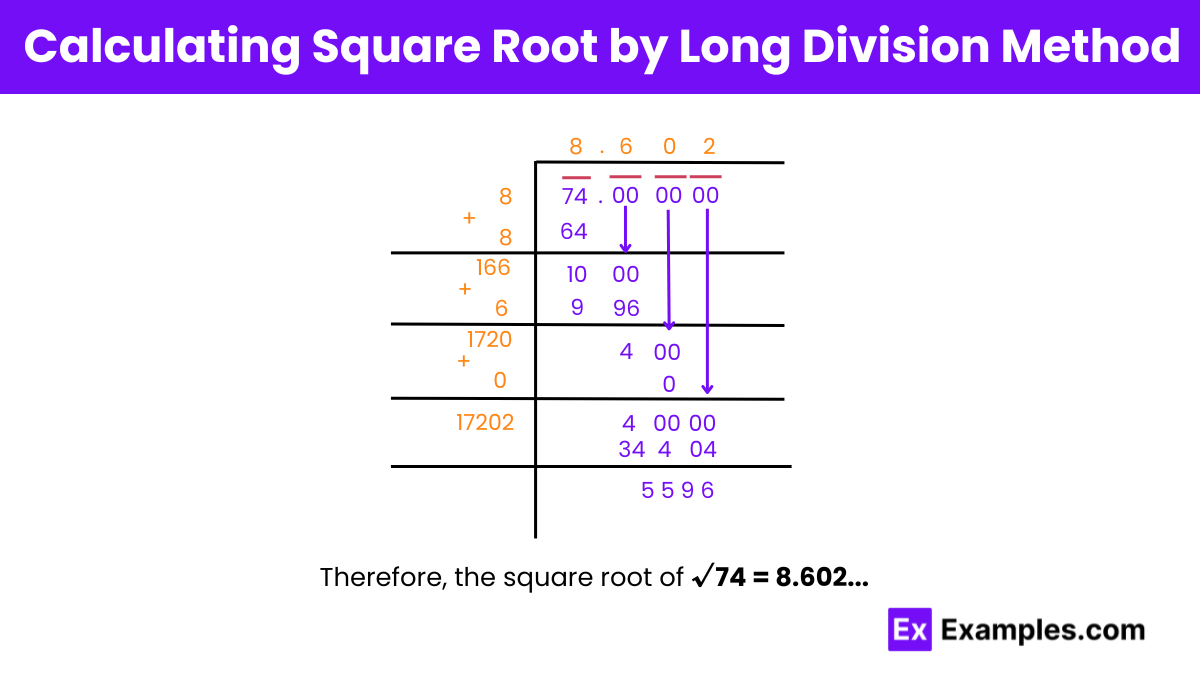Which of the following is not a square root of 74?
8.60
8.7
8.5
9


In mathematics, particularly within algebra, squares and square roots are foundational. Squaring a number like 74 involves multiplying it by itself to obtain 5476, which is fundamental for exploring rational and irrational numbers. Understanding these concepts enriches comprehension of mathematical relationships and patterns, vital in algebraic studies and beyond.
A square number, such as 74, results from multiplying an integer by itself. The square of 74 equals 5476. This fundamental operation illustrates algebraic principles, showcasing the properties of rational and irrational numbers, enriching understanding of mathematical relationships and patterns.
Or
√74 ≈ 8.602 Up to 3 decimals
The square root of 74, when squared, equals 74. It’s the number that, when multiplied by itself, gives 74. The square root, approximately 8.602, unveils the origin of 74. Understanding square roots elucidates their role in algebraic analysis, showcasing their significance in mathematical patterns and relationships.
Exponential Form : 74^½ or 74^0.5
Radical Form : √74
This is because it cannot be expressed as a fraction of two integers, and its decimal representation goes on indefinitely without repeating or terminating.
Rational Numbers: Expressible as fractions of two integers, like 3/4 or -5/2.
Irrational Numbers: Cannot be written as fractions of integers. Their decimal expansions neither terminate nor repeat. For example, √2 ≈ 1.41421356 is irrational.
Estimation Method: Make an initial guess, then refine it iteratively using approximation techniques.
Prime Factorization Method: Express 74 as a product of prime factors, then find the square root of each prime factor.
Long Division Method: Apply long division to iteratively find the digits of the square root.
Using Calculator: Use a calculator with a square root function to directly compute the square root of 74.

Step 1: Digit Pairing
Step 2: Initial Quotient
Step 3: Bring Down the Next Pair of Digits
Step 4: Determine the Next Digit
Step 5: Bring Down More Zeros
Step 6: Determine the Next Digit
Step 7: Continue the Process
Final Result
Decimal point and adding zeros in pairs to the remainder until the desired accuracy is achieved.
74 is not a perfect square because it cannot be expressed as the product of an integer multiplied by itself. There are no integers where the product of the integer with itself equals 74.
The square root of 74 to the nearest tenth is approximately 8.6. This value is derived from the long division method, refining the result to one decimal place.
The factors of 74 are 1, 2, 37, and 74. These numbers divide 74 without leaving a remainder, showing its divisibility properties.
74 is not a prime number because it has more than two distinct positive divisors: 1, 2, 37, and 74. Prime numbers have exactly two distinct positive divisors.
Text prompt
Add Tone
10 Examples of Public speaking
20 Examples of Gas lighting
Which of the following is not a square root of 74?
8.60
8.7
8.5
9
What is the nearest perfect square to 74?
64
81
49
100
If the square of a number is 74, what is the number?
8.5
8.60
8.7
9
The value of √74 falls between which two consecutive integers?
8 and 9
9 and 10
7 and 8
10 and 11
What is the square of 9?
81
74
100
64
Which number squared is just above 74?
8
9
10
11
If x² = 74, what is the value of x?
8.5
8.60
8.7
9
What is the value of √74 in decimal form rounded to two decimal places?
8.60
8.66
8.70
8.75
The square of which of the following is closest to 74?
8
9
10
11
What is the square root of 5476?
73
74
75
76
Before you leave, take our quick quiz to enhance your learning!

